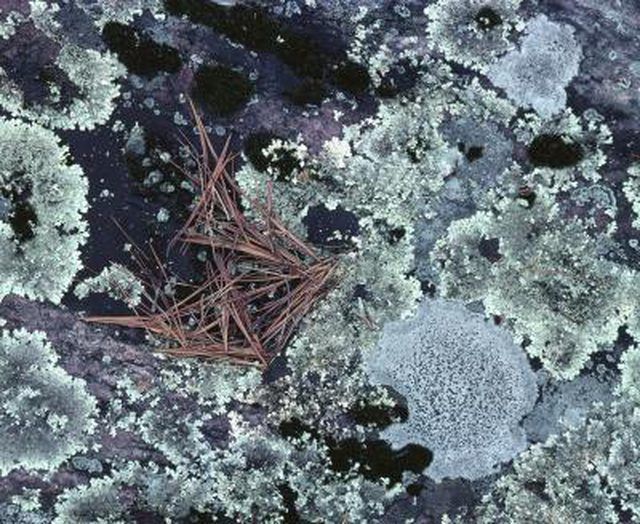Bulbs
Flower Basics
Flower Beds & Specialty Gardens
Flower Garden
Garden Furniture
Garden Gnomes
Garden Seeds
Garden Sheds
Garden Statues
Garden Tools & Supplies
Gardening Basics
Green & Organic
Groundcovers & Vines
Growing Annuals
Growing Basil
Growing Beans
Growing Berries
Growing Blueberries
Growing Cactus
Growing Corn
Growing Cotton
Growing Edibles
Growing Flowers
Growing Garlic
Growing Grapes
Growing Grass
Growing Herbs
Growing Jasmine
Growing Mint
Growing Mushrooms
Orchids
Growing Peanuts
Growing Perennials
Growing Plants
Growing Rosemary
Growing Roses
Growing Strawberries
Growing Sunflowers
Growing Thyme
Growing Tomatoes
Growing Tulips
Growing Vegetables
Herb Basics
Herb Garden
Indoor Growing
Landscaping Basics
Landscaping Patios
Landscaping Plants
Landscaping Shrubs
Landscaping Trees
Landscaping Walks & Pathways
Lawn Basics
Lawn Maintenance
Lawn Mowers
Lawn Ornaments
Lawn Planting
Lawn Tools
Outdoor Growing
Overall Landscape Planning
Pests, Weeds & Problems
Plant Basics
Rock Garden
Rose Garden
Shrubs
Soil
Specialty Gardens
Trees
Vegetable Garden
Yard Maintenance
How to Save Pine Trees With Browning Falling Needles
How to Save Pine Trees With Browning Falling Needles. The signs of stress or disease in pine trees will often go unnoticed for a time. When a pine tree starts losing needles, it is in serious stress. The stress can have environmental causes or may be the result of disease. In any case, the tree is conserving resources by dropping needles....
The signs of stress or disease in pine trees will often go unnoticed for a time. When a pine tree starts losing needles, it is in serious stress. The stress can have environmental causes or may be the result of disease. In any case, the tree is conserving resources by dropping needles. Photosynthesis may slow, preventing new growth. The process of saving a pine begins with identifying the source of the problem.
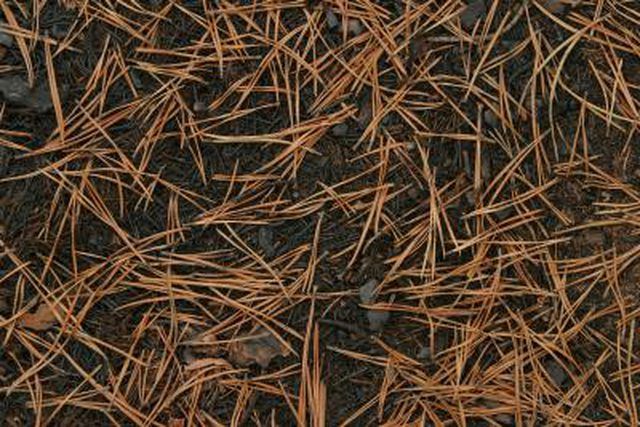
Things You'll Need
Magnifying glass
Fungicide
Pruning shears
Spade
Step 1
Identify the type of pine. Certain diseases are species specific. Knowing the pine species will help you eliminate certain causes. Your local garden store can help with identification. Online guides are also available.
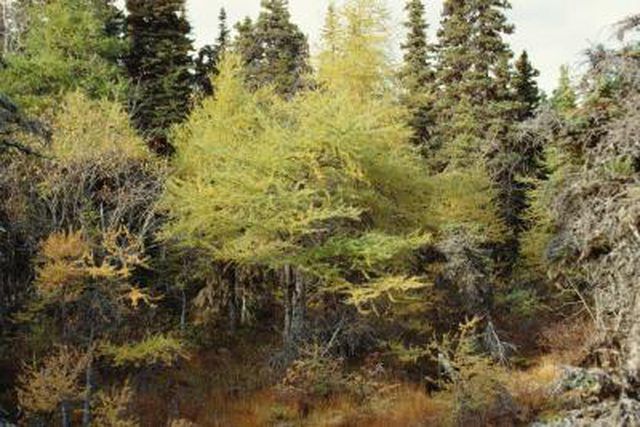
Step 2
Rule out natural causes for browning and falling needle leaves. Seasonal loss of 3-year-old needles is normal and is not a cause for alarm or treatment. This loss normally occurs in the fall.
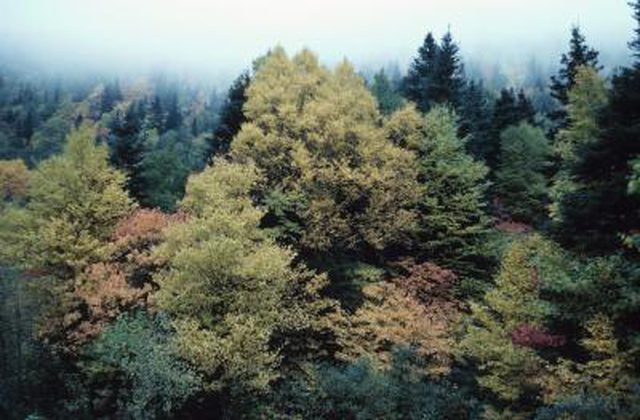
Step 3
Examine the environment around the pine. Pine needles may turn brown and fall off as a result of pollution. Runoff from engine oil, gas and salt can harm the root system of pines and contaminate the surrounding soil.
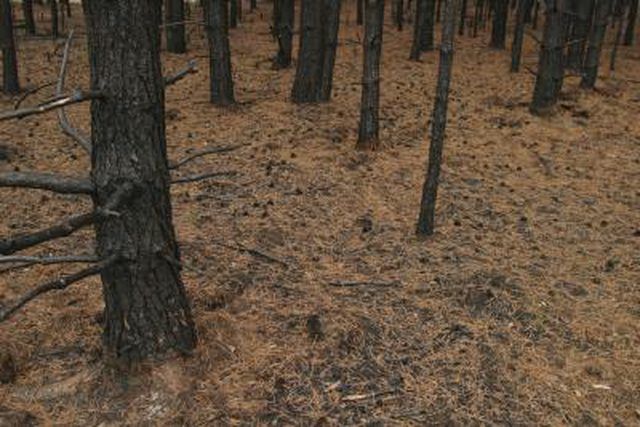
Step 4
Place mulch or barriers around pines if runoff is an issue. If runoff cannot be eliminated, then reducing its impact might be possible. More likely than not, this will need to be a lifelong prevention method. As the pine and soil recover, the browning and needle cast will slow over time.
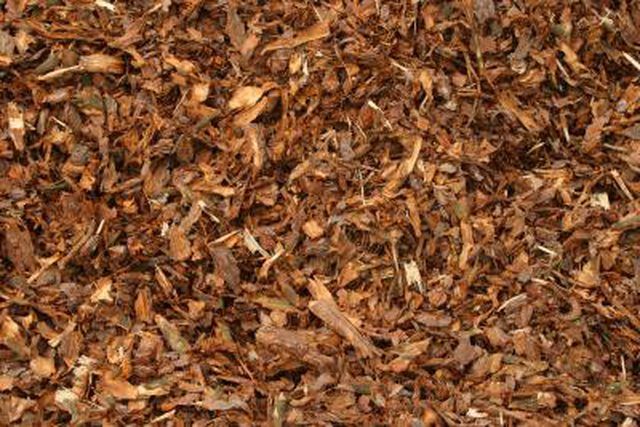
Step 5
Look at the needles for evidence of spotting. Note the color and shape of any spots that are detected. A magnifying glass may be helpful. These characteristics will be important for identification of the disease, if present. Also, note the areas of damage.
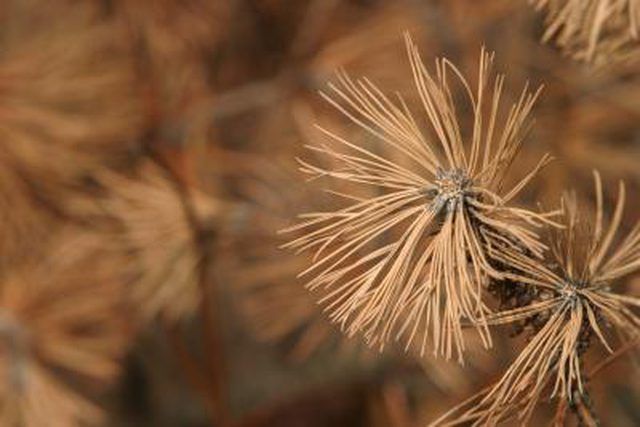
Step 6
Identify the disease. Some diseases are readily identified by their unique spotting. Identification of the disease is important to determine the best course of action. Your local extension office can provide assistance.
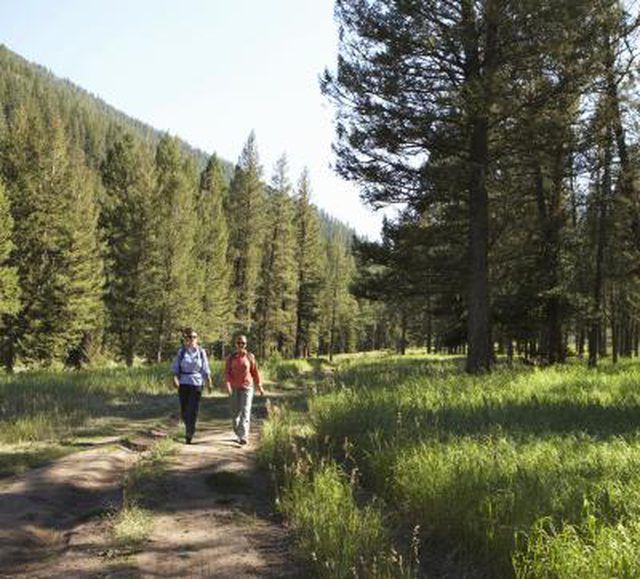
Step 7
Prune diseased or damaged branches and twigs. Damaged portions provide additional areas for disease to gain hold of the pine tree. Dispose of clippings properly to avoid re-infecting the trees.
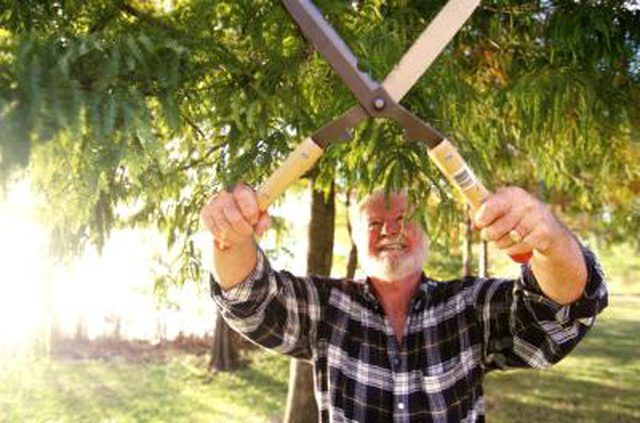
Step 8
Weed around the pine to encourage better air movement. Fungal diseases, such as Lophodermium needle cast, thrive in moist conditions. Removal of weeds will improve circulation and will help dry areas where moisture can be trapped.
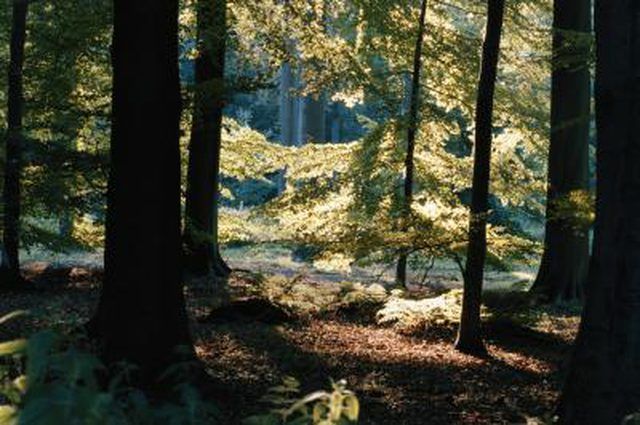
Step 9
Remove host species. Some pine diseases, such as white pine blister rust, require an intermediate host to complete their life cycle. Currants and gooseberries are host species for this disease. As with clippings, dispose of host plants well away from pines.
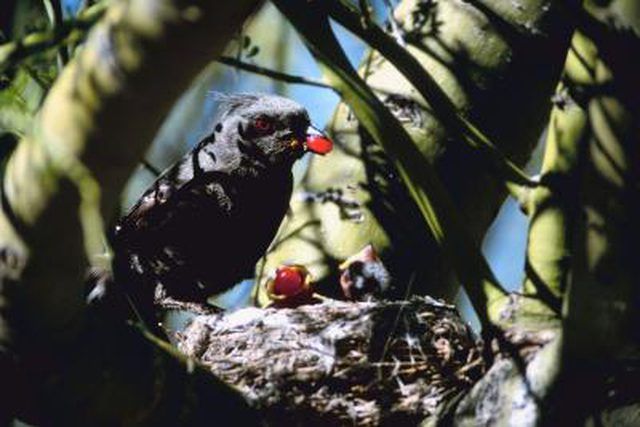
Step 10
Apply a U.S. Environmental Protection Agency-approved fungicide. In cases of severe damage, pesticide application may be necessary. The fungicide must be on the pine trees before the fungus goes to spore. If not, the fungus will be able to spread to other pines.
